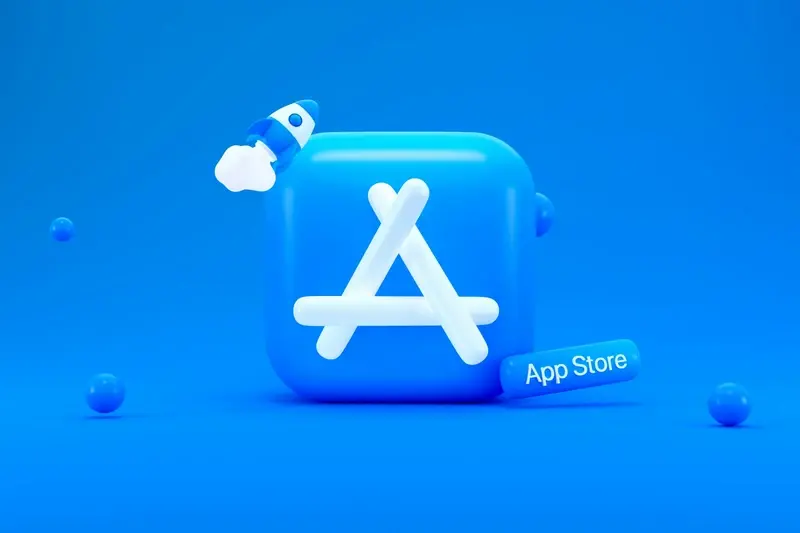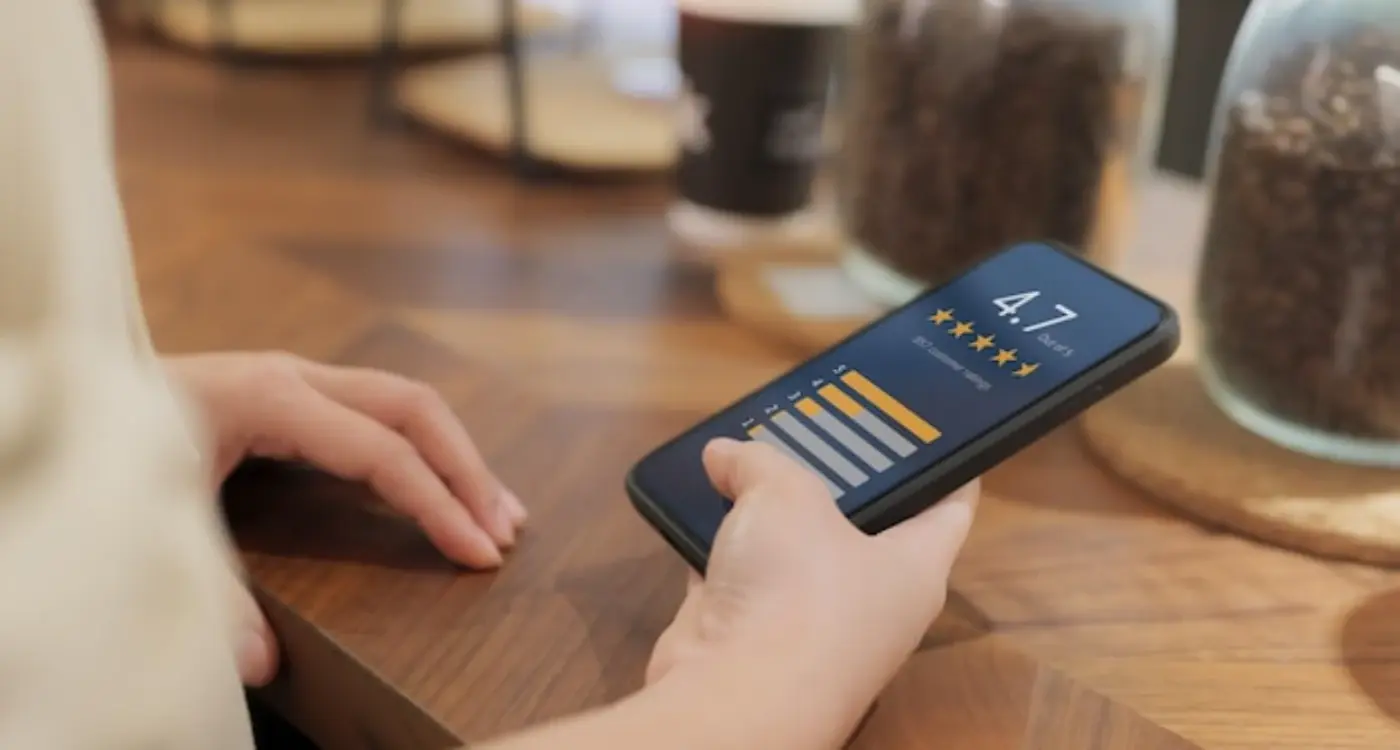How Do I Acquire New Mobile App Users?
You've built an app. You've spent months—maybe even years—getting the features just right, the design polished, and the bugs squashed. Now comes the bit that catches most people off guard: getting users to actually download and use it. I've seen brilliant apps disappear into the digital void simply because their creators thought "if you build it, they will come" was more than just a line from a film!
Mobile app user acquisition isn't rocket science, but it does require strategy. With millions of apps competing for attention in the app stores, your beautiful creation needs more than luck to succeed. You need a proper plan for app user growth strategies that actually work—not just the tactics that sound good on paper but fall flat in reality.
The best app in the world is worthless if nobody knows it exists
Throughout this guide, we'll walk through proven app marketing tactics that can help boost your mobile app downloads. From understanding who your users really are to running effective user acquisition campaigns and implementing smart app growth hacking techniques. Each chapter builds on the last, giving you a complete roadmap for turning your app from a well-kept secret into something people actively seek out and recommend to their mates.
Understanding Your Target Audience
Right, let's talk about something that trips up more app developers than I care to count—actually knowing who you're building for. I can't tell you how many times I've sat in meetings where someone says "our app is for everyone" and I have to bite my tongue. No app is for everyone, and thinking that way is the fastest route to building something nobody wants.
When we start working with clients at Glance, one of the first exercises we do is create what I call user personas. These aren't just made-up characters—they're detailed profiles of real people who would genuinely benefit from your app. Think about their age, their daily struggles, where they hang out online, what makes them tick. The more specific you get, the better.
Key Questions to Ask About Your Users
- What problem does your app solve for them?
- When and where would they use your app?
- What other apps do they already use?
- How tech-savvy are they?
- What would make them delete your app?
Here's the thing—you might think you know your audience, but assumptions can be dangerous. I've seen apps pivot completely after proper user research revealed their actual audience was totally different from what they'd imagined. Don't skip this step; it'll save you months of frustration later.
Pre-Launch Preparation and App Store Optimisation
Right, let's talk about something that makes or breaks your mobile app user acquisition strategy before you even launch—getting your app store presence sorted. I've watched countless brilliant apps disappear into the void because their creators thought building a great product was enough. Spoiler alert: it isn't!
Your app store listing is your shopfront window, and frankly, most people get it wrong. They rush through the setup, throw in some generic screenshots, write a boring description, and wonder why their app marketing tactics aren't working. The truth is, app store optimisation starts way before you hit that publish button.
Getting Your App Store Assets Right
Your app icon needs to stand out in a sea of competition—think bold, simple, and instantly recognisable. Screenshots should tell a story; don't just show static screens, show your app solving real problems. Your app description? That's where you weave in those user acquisition campaigns keywords naturally whilst explaining why someone's life will be better with your app.
Start collecting keywords for your app store listing months before launch by researching what your competitors are ranking for and what your target users are actually searching for.
Categories and Keywords Strategy
Choosing the right category can make or break your app growth hacking efforts. Don't just pick the obvious one—sometimes a slightly less competitive category gives you better visibility. Your keyword strategy should focus on terms your actual users would type, not what you think sounds professional.
- Research competitor keywords using app store intelligence tools
- Test different keyword combinations before settling on your final list
- Monitor which keywords drive the most mobile app downloads
- Update your keywords regularly based on performance data
- Consider seasonal trends that might affect search behaviour
The beauty of proper pre-launch preparation is that it sets up everything else you'll do for app user growth strategies. Get this foundation right, and your paid campaigns, social media efforts, and organic growth will all perform better.
Organic Growth Through Word of Mouth and Reviews
I've seen apps succeed and fail over the years, and I can tell you that organic growth is like finding a twenty-pound note in your old jeans—it feels brilliant and costs you nothing! When people love your app enough to tell their mates about it, that's when you know you've built something special. Word of mouth is still the most powerful marketing tool we have, even with all the fancy digital advertising options available.
Getting Those First Reviews
Reviews can make or break your app, honestly. Most people won't download an app with fewer than ten reviews or anything below three stars. I always tell my clients to start with their inner circle—friends, family, colleagues—anyone who'll give you honest feedback and hopefully a decent review. Don't be shy about asking; just make sure your app actually works properly first! There's nothing worse than asking someone to review a buggy app.
Timing Your Review Requests
Here's something I've learned the hard way—timing matters when asking for reviews. Don't pester users the moment they open your app; wait until they've had a positive experience. Maybe they've completed their first task successfully or unlocked a feature they wanted. That's your golden moment. A simple, polite pop-up asking if they're enjoying the app can work wonders if you catch them at the right time.
Paid Advertising Campaigns and User Acquisition
Right, let's talk about spending money to get users—something that makes many app developers break out in a cold sweat! I get it, parting with your hard-earned cash feels scary when you're not sure what you'll get back. But here's the thing: paid advertising can be one of the fastest ways to get your app in front of the right people, if you do it properly.
Choosing Your Advertising Platform
You've got loads of options these days. Facebook and Instagram ads work brilliantly for apps that have a strong visual element or target specific demographics. Google Ads can catch people who are actively searching for solutions your app provides. Apple Search Ads put you right at the top of App Store searches—handy for getting noticed amongst all those competing apps.
The best advertising platform isn't the one with the most users; it's the one where your specific users spend their time
Setting Your Budget and Expectations
Start small and test everything. I always tell clients to begin with a modest budget—maybe £20-50 per day—and see what happens. Track your cost per install religiously; if you're paying £5 to acquire a user but they're only worth £2 to your business, you've got a problem. The beauty of digital advertising is that you can adjust, pause, or scale campaigns quickly based on what the data tells you.
Social Media Marketing and Content Strategies
Social media can be your best mate when it comes to getting people talking about your app—but only if you do it right. I've watched apps go viral overnight through clever social content, and I've also seen perfectly good apps disappear into the void because their social strategy was all wrong. The trick isn't posting constantly; it's posting smart.
Start by picking the platforms where your audience actually hangs out. If you're targeting teenagers, TikTok and Instagram are no-brainers. Business professionals? LinkedIn might be your goldmine. Don't spread yourself too thin trying to be everywhere at once—I've seen that backfire more times than I can count.
Content That Actually Works
Your content needs to show your app in action, not just talk about it. Behind-the-scenes videos of your development process work brilliantly; people love seeing how things are made. User-generated content is pure gold—when real people share screenshots or videos using your app, that's worth more than any fancy advert you could create.
- Short demo videos showing key features
- User success stories and testimonials
- Quick tips and tutorials
- Behind-the-scenes development content
- Interactive polls and Q&As
Remember, social media moves fast. What works today might not work tomorrow, so stay flexible and keep experimenting with different types of content until you find your sweet spot.
Influencer Partnerships and Collaborative Marketing
Working with influencers has become one of my favourite mobile app user acquisition strategies over the years. There's something quite powerful about having someone with a genuine following recommend your app to their audience—it feels more authentic than traditional advertising and often delivers better results for app downloads.
The trick is finding the right influencers for your app. You don't always need the biggest names with millions of followers; sometimes micro-influencers with 10,000 to 100,000 engaged followers can be far more effective for user acquisition campaigns. Their audiences tend to trust them more and actually take action on their recommendations.
Types of Influencer Collaborations
- Sponsored posts showcasing your app in action
- Story takeovers demonstrating key features
- Long-term brand partnerships for sustained app growth
- User-generated content campaigns encouraging app downloads
- Cross-promotion with complementary apps
Start small with local influencers or those in your specific niche. They're often more affordable and have audiences that align perfectly with your target users.
When reaching out to potential partners, be genuine about why you think they'd be a good fit. Share how your app could genuinely benefit their followers rather than just asking for promotion. This approach has served me well in app marketing tactics and builds stronger, more authentic partnerships that drive real app user growth.
Measuring Success and Optimising Your Approach
Right, so you've launched your app and tried various marketing strategies—but how do you know what's actually working? This is where things get really interesting because the data tells a story that your gut feeling might completely miss.
Key Metrics That Actually Matter
I always tell my clients to focus on three main numbers: downloads, active users, and retention rates. Downloads are nice for your ego, but they don't pay the bills; active users show real engagement, and retention rates tell you if people actually find your app useful enough to keep coming back. You want to track where your best users are coming from too—was it that expensive Instagram campaign or just good old-fashioned word of mouth?
Making Smart Changes Based on Data
Here's the thing about app marketing that surprises most people: what works for one app won't necessarily work for another, even in the same category. I've seen fitness apps that thrive on TikTok whilst others do better with Google Ads. The secret is testing small changes regularly rather than making massive shifts all at once. Maybe your App Store screenshots need tweaking, or perhaps your social media timing is off. Keep experimenting, keep measuring, and don't be afraid to stop doing things that aren't working—even if they seemed like brilliant ideas at the start.
Conclusion
After working with hundreds of clients on their mobile app user acquisition strategies over the years, I can tell you that success comes down to one thing—persistence. You're not going to crack the code overnight, and that's perfectly fine. The best performing apps I've seen have all had one thing in common: their teams never stopped testing, learning, and adapting their approach.
What works brilliantly for one app might fall flat for another, even if they're in the same category. That's why understanding your audience from day one is so important—it shapes everything from your app store optimisation to your social media content. Don't spread yourself too thin trying every tactic at once; pick two or three channels that make sense for your users and focus on doing those really well.
The mobile app market isn't getting any less competitive, but that doesn't mean you can't succeed. I've watched apps go from zero downloads to millions of users by sticking to the fundamentals: solving a real problem, making their app easy to find, and treating their early users like gold. Keep measuring what matters, not just vanity metrics—and remember that the best user acquisition strategy is building something people actually want to use and recommend to their mates.
Share this
Subscribe To Our Learning Centre
You May Also Like
These Related Guides

What Makes An App Successful In The App Store?

How Do I Get More People to Rate My App in the Store?



